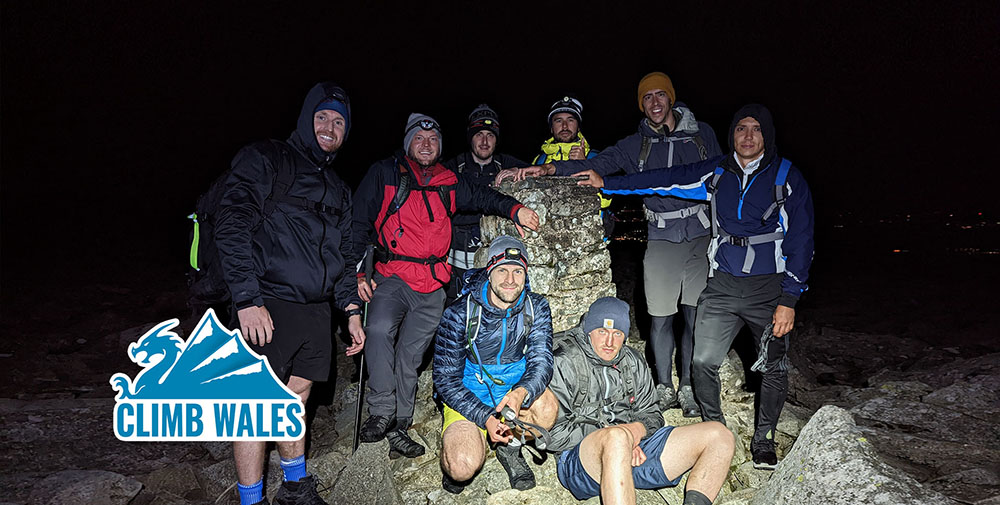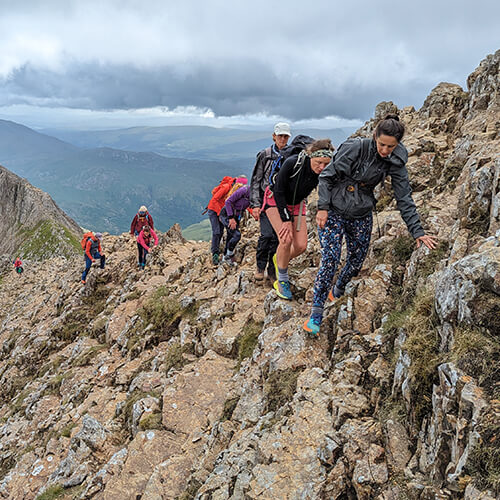Welcome
Are you ready to push your limits and embark on an epic adventure which will take you through the magnificent and rugged mountains of Snowdonia? With lush, sparkling lakes, thrilling knife-edge ridges, and majestic mountain vistas, the Welsh 3000s is an adventure of epic proportions!
In this article, I discuss everything you ever wanted to know about how to do the Welsh 3000s, including how to plan, prepare for, and complete the challenge.
Having lost count of how many times I've completed the Welsh 3000s myself, the information I share is based entirely on personal experience both through doing the challenge myself and whilst working as a mountain guide.
Last year alone (2023) I successfully completed the full Welsh 3000s Route seven times: twice with friends and family, and five times in a professional context. It's been two months since I last did it, and as I write this article, I'll be doing it again next week!
Logistically, the Welsh 3000s is one of the most complex activities we offer. There's a lot to cover, so let's dive in...
Contents
- What is the Welsh 3000s?
- Welsh 3000s Peak List
- Welsh 3000s Route Overview
- The Snowdon Massif
- The Glyderau
- The Carneddau
- Welsh 3000s Full Route Map
- Welsh 3000s Directions / Route Description
- How long does it take to do the Welsh 3000s?
- Which Direction to do the Welsh 3000s?
- Welsh 3,000s Timings and Staying on Schedule for a 24-hour Ascent
- What time of year to do the Welsh 3000s?
- Welsh 3000s Kit List - What Equipment to Take on the Welsh 3000s
- What Food to Take on the Welsh 3000s
- How to train for the Welsh 3000s
- Other Welsh 3000s Logistics
- Welsh 3000s Records
- Should you Hire a Guide for the Welsh 3000s?
- Further Reading

5 gloved hands atop the trig-point at Snowdon's Summit

What is the Welsh 3000s?
The Welsh 3000s is a continuous hike which tackles every mountain in Wales with a height of over 3,000 feet (914m) - hence the name "Welsh 3000's".
Given that Snowdonia has 15 mountains whose peaks stand above 3,000 feet, the challenge is sometimes referred to as the Welsh 15-Peaks-Challenge. Often, the word "Welsh" is replaced with "Wales", or omitted entirely.
Sometimes, it is also known as the Welsh 14-Peaks-Challenge, as there is still some discussion over whether Carnedd Gwenllian should be included. Given that you have to go over Carnedd Gwenllian anyway, and it is barely noticeable (blink and you'll miss it) so makes almost no difference to the walk, you may as well include it. And when you're down at the pub, 15 peaks sounds better than 14 peaks right?
There is no "official event" for the Welsh 3000s. That is to say, there is no one organiser from whom you have to purchase tickets. In fact, there are no tickets. Anybody can rock-up and attempt the challenge whenever they please.
Completing the challenge over two days is possible, however, the topography of the landscape lends itself far better to doing it over three days. For the most part though, people aim to complete the challenge in under 24-hours. This is achievable by most people with a good level of fitness, but the ever-present pressure of beating the clock means that there's no time to stop, take photos, and soak in the incredible views.
On reaching the finish line, you will have walked/hiked/ran 50km (31 miles) - that's ultra-marathon distance - climbed over 4,500m (15,000 feet), and burned about 7,500 calories. For the smart-watch users amongst you, expect about 100,000 steps, about 1,500 flights of stairs (up AND down), and all in a single day. A 24-hour Welsh 3000s is a big undertaking and certainly lives up to its namesake of being a "challenge".

Crib Goch in all its splendor with Glyder Fawr in the background, and Llyn Llydaw below

Two young ladies in hiking gear stood atop a pinnacle with Snowdon summit and Lliwedd in the background

A female hiker looking over towards the summits of Snowdon and Y Lliwedd
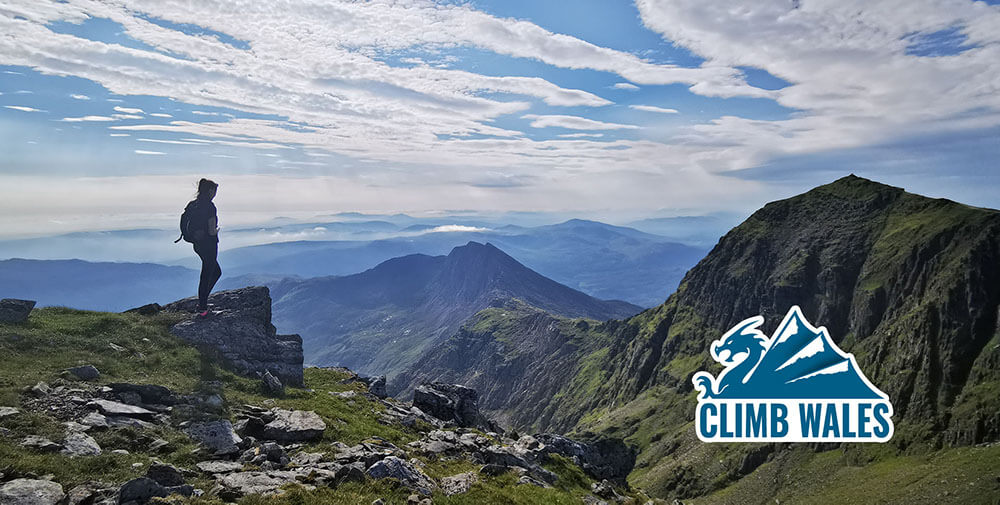
Welsh 3000s Peak List
The Welsh 3000s comprises 15 peaks which are split over three distinct mountain ranges:
The Snowdon Massif
- Yr Wyddfa (Snowdon)
- Carnedd Ugain
- Crib Goch
The Glyderau
- Elidir Fawr
- Y Garn
- Glyder Fawr
- Glyder Fach
- Tryfan
The Carneddau
- Pen yr Ole Wen
- Carnedd Dafydd
- Yr Elen
- Carnedd Llewellyn
- Foel Grach
- Carnedd Gwenllian
- Foel-Fras

7 ladies with 1 one finger in the air at the summit of Foel Fras
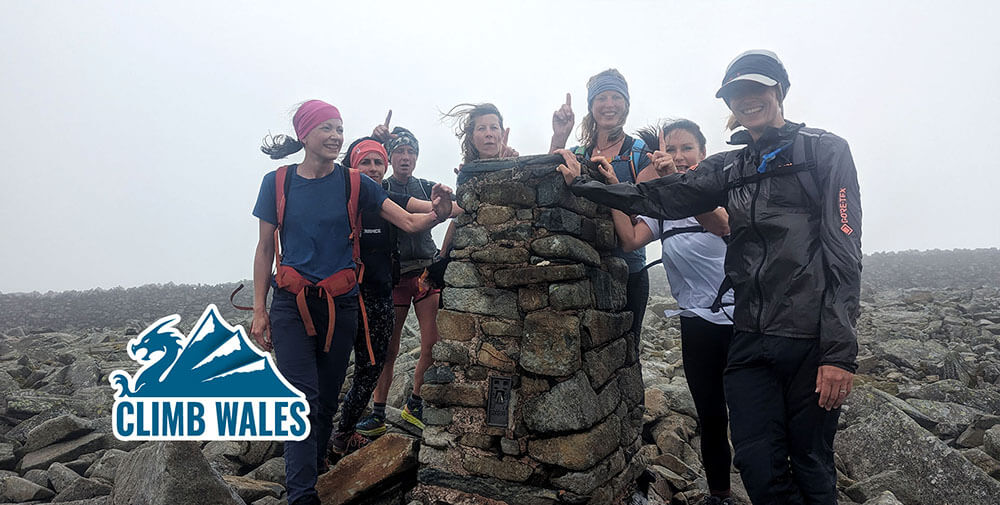
A group ladies with two fingers in the air, atop the rocky summit of Carnedd Gwenllian (Peak 2 for this group).
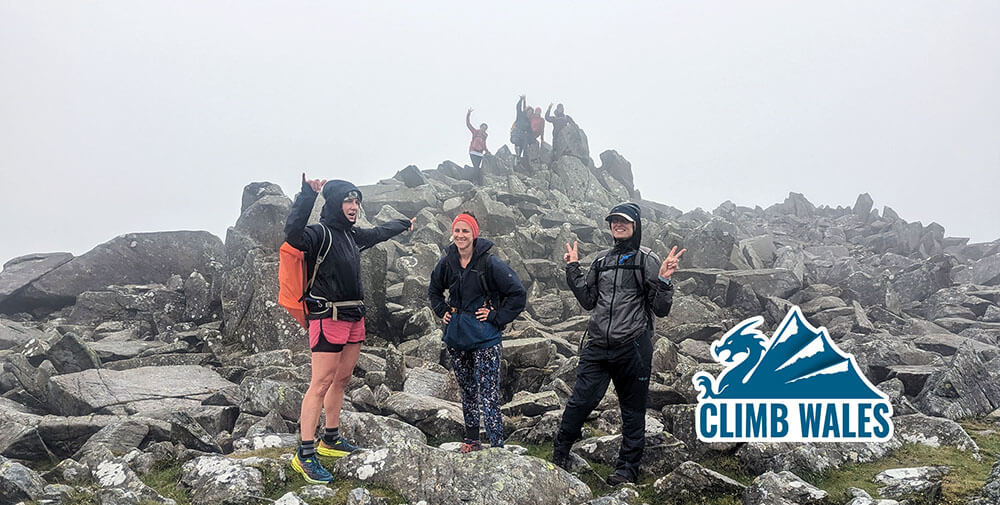
The same group of ladies have made it to Peak 5, Yr Elen.

A brief moment of respite atop Tryfan's rocky summit.

Peak 10 - Glyder Fawr. Two thirds of the way through.
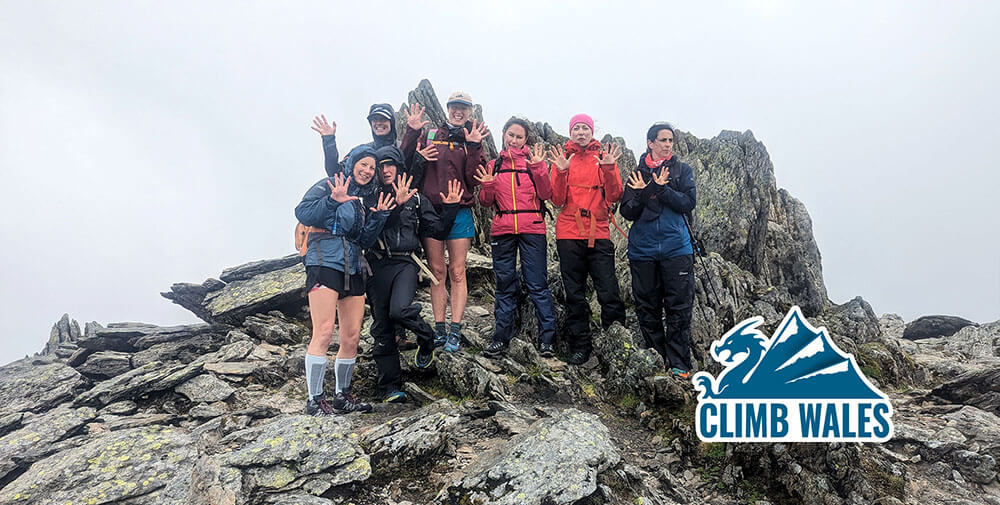
Crib Goch out of the way, the ladies celebrate on Carnedd Ugain.
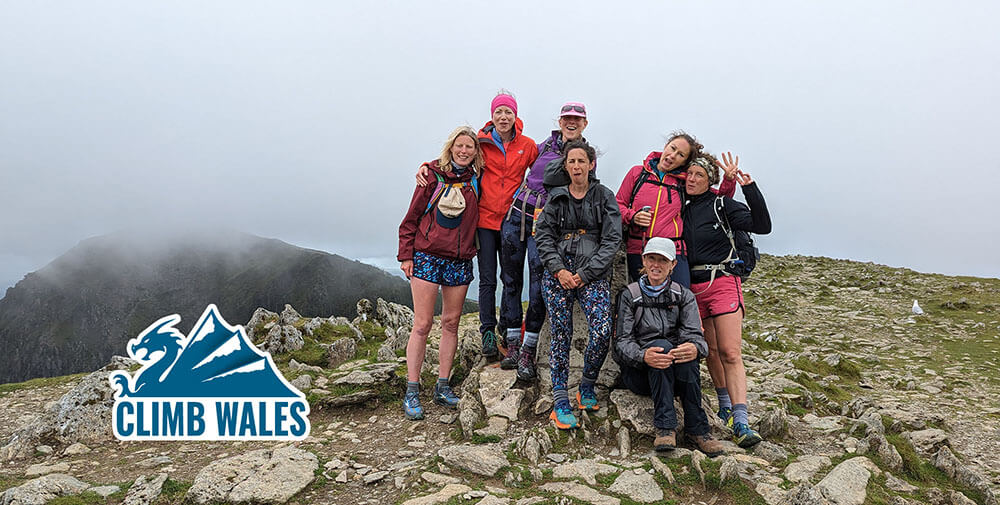
And finally, the group of 7 ladies celebrating on Snowdon Summit and the finish line. Challenge complete.
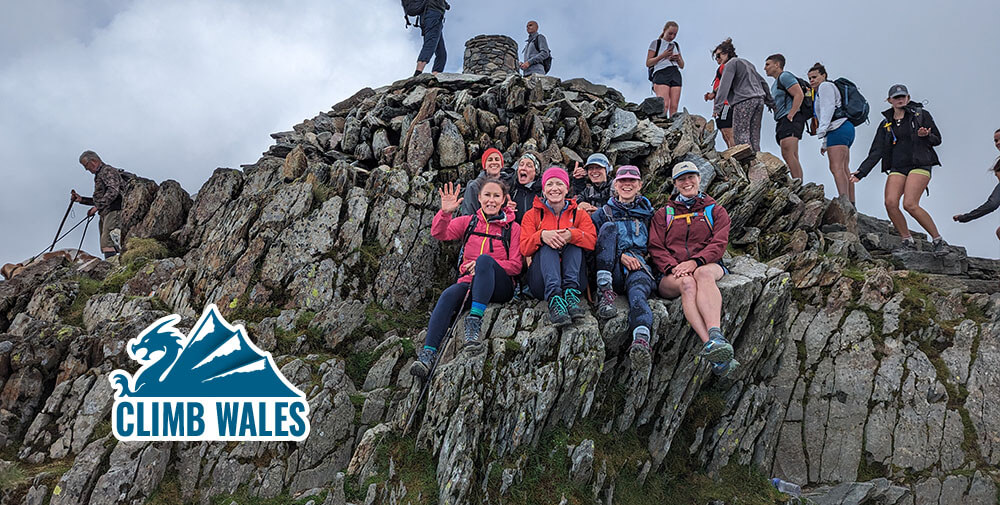
Welsh 3000s Route Overview
The following image shows a cross-section of the full Welsh 3000s route. The three distinct mountain ranges can be seen, as well as the two valleys (The Llanberis Pass, and the Ogwen Valley) which separate them.
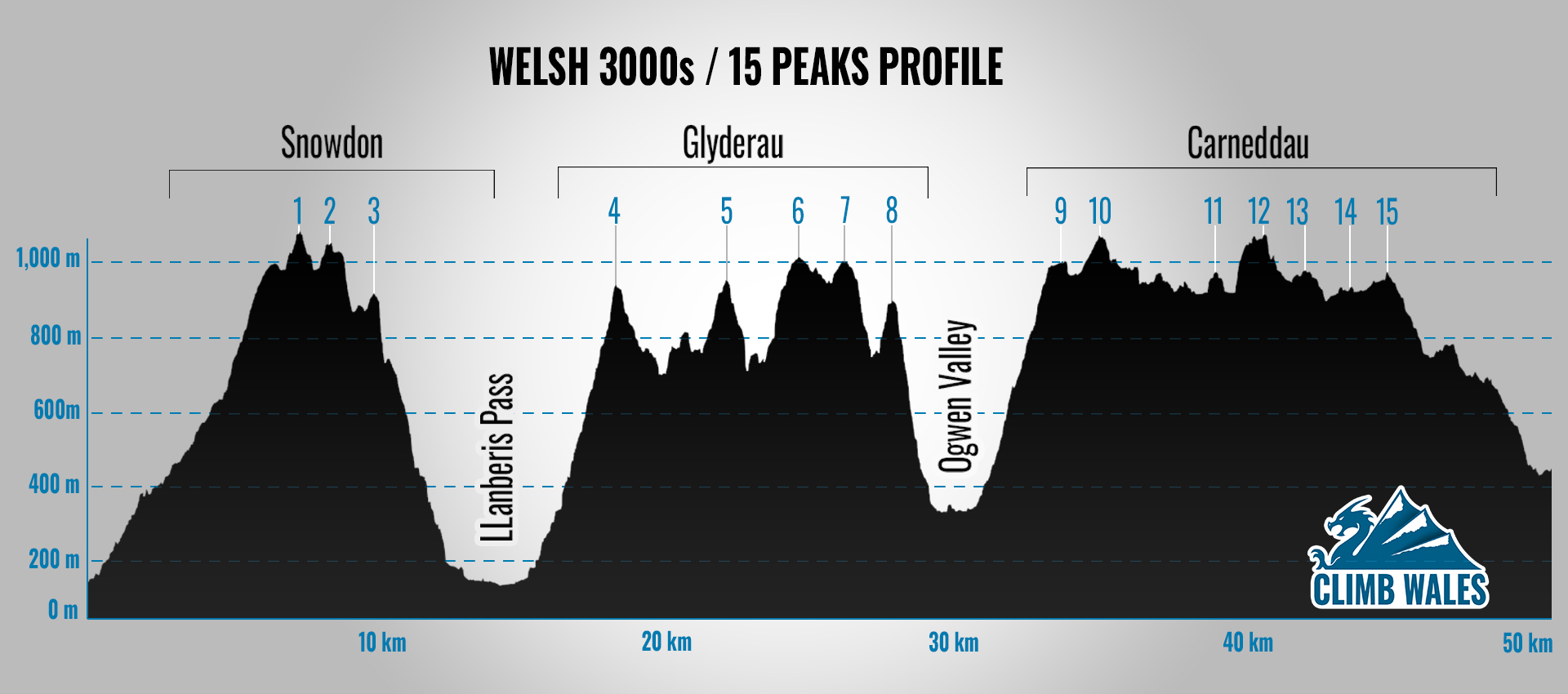
Looking at the image above, you can clearly see the three biggest climbs of the challenge are getting to the top of Peak 1 (Yr Wyddfa / Snowdon), leaving the Llanberis Pass to get to the top of Peak 4 (Elidir Fawr) and leaving the Ogwen Valley to get to the top of Peak 9 (Pen Yr Ole Wen).
In my experience though, I've found that the two uphill sections which people struggle with the most are getting to the top of Peak 6 (Glyder Fawr) and Peak 12 (Carnedd Llywelyn).
Section 1, The Snowdon Massif
The Snowdon Massif is the most dramatic of the three mountain ranges and at 1,085 meters (3,560 feet) above sea level, has the highest summit in all of England and Wales - Yr Wyddfa / Snowdon. Despite the jostling queues for the summit, the views are simply majestic.
The Snowdon Massif is also home to the most imposing peak of the 15 - Crib Goch, which in its own right is one of the most revered ridge scrambles in all the UK. The route will see you teetering across the knife-edge ridge with huge vertical drops on either side.

A gentleman sits, looking at the camera, on the edge of a steep and rocky ridge.

A man looks back at the rocky ridge of Crib Goch and takes a photo with his mobile phone
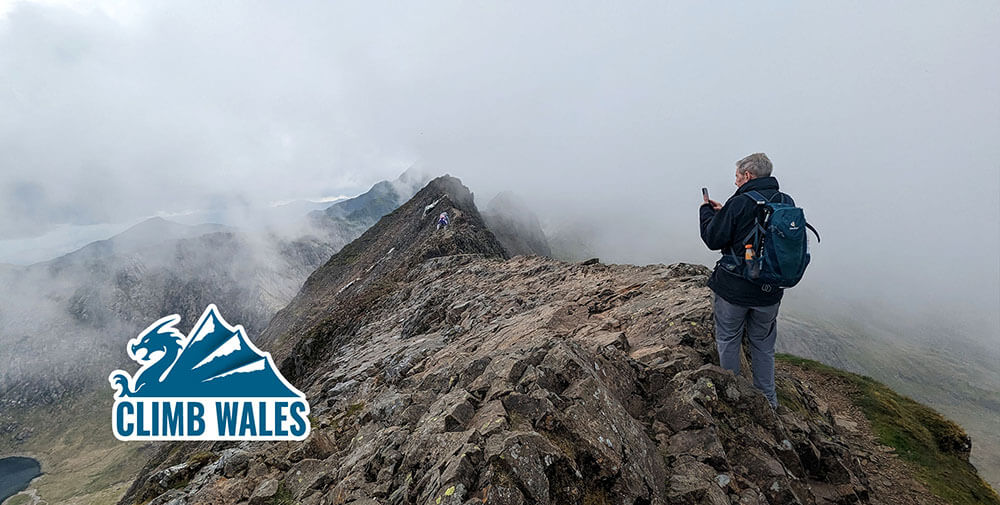
A lady crawls across Crib Goch whose ridge disappears into the clouds
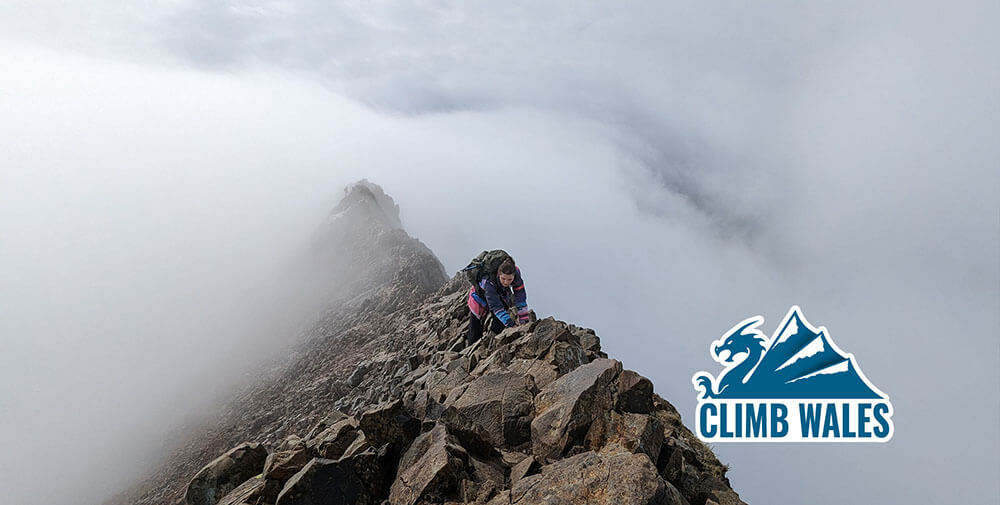
A man crawling across Crib Goch

Climbing along Crib Goch Ridge with camping gear in our rucksacks

How scary is Crib Goch? Alex takes a deep breath to calm his nerves

Section 2, The Glyderau
The Glyders, or to give it its proper Welsh name, Y Glyderau, is a technical and rocky mountain range.
The climb from the Llanberis Pass to the summit of Elidir Fawr (Peak 4) represents the biggest uphill of the entire challenge. The hill is "in your face" with little in the way of views to act as distraction. I don't think I've ever taken this path to the summit unless I'm doing the Welsh 3000s. For completing all 15 peaks though, this is the most efficient route.
In addition to having the longest uphill, the climb to Glyder Fawr (Peak 6) is the toughest; it's a steep climb on loose rock and gravel. It's a good idea to eat something substantial at the top of Y Garn (Peak 5) so that you have plenty of energy when you reach this incline.
The route to get from Glyder Fawr to Glyder Fach (Peak 7) is strewn with large boulders. There is no way around them, so it's a case of clambering over them and trying to pick a way through. The paths disappear and this area is notorious for people getting lost. Only yesterday (as I write this article) did I see a social media post of the Ogwen Mountain Rescue Team rescuing a group of 6 walkers who'd got lost up there and found themselves stuck halfway up a rock climb.
To get from Glyder Fach to Bwlch Tryfan sees you scrambling down a steep and rocky slope. When guiding, I always carry a rope with me on Crib Goch, however, I've needed to use a rope to help people down this section far more than I ever have on Crib Goch.
And of course, let's not forget the most significant obstacle in these parts; getting to and from the summit of Tryfan. It's a huge pile of boulders which in places will see you climbing right next to - as one of our clients once quoted - "an 800,000ft drop".
The walk down from Tryfan is hard-going on the knees and people often reflect on this as one of the hardest parts of the challenge.
The views on the Glyderau are simply jaw dropping, and it's one of my favourite places in Snowdonia to visit. That being said, this section of the Welsh 3000s is not to be underestimated.

The rocky summit of Tryfan.

Two people sat on Tryfan's North Ridge. Glyder Fach and Glyder Fawr can be seen in the background.

A team of four scrambling down Crib Y Ddysgl
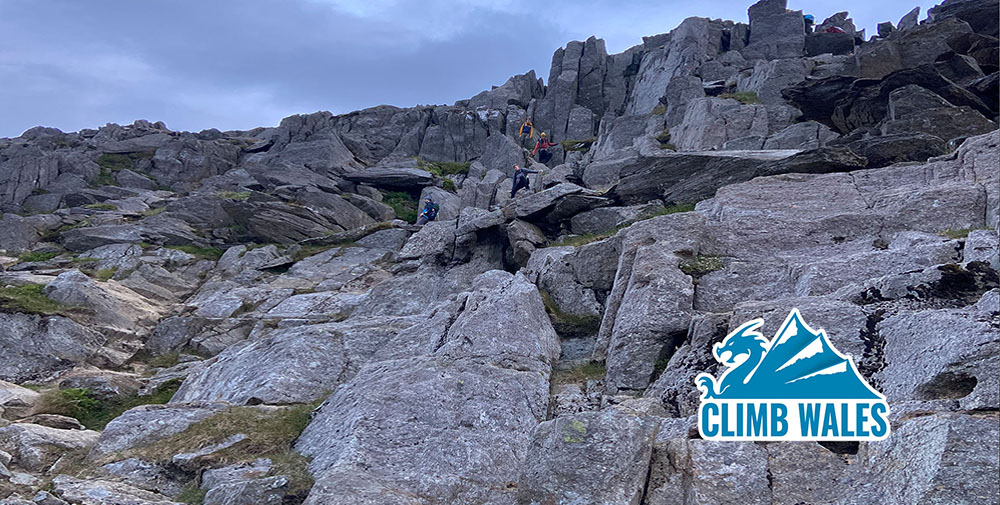
Section 3, The Carneddau
The Carneddau, although the longest section of the walk, is (for the most part at least) the easiest. Rarely dropping below 900m, the ups and down between the summits are far less severe. With long sections which are reasonably flat, it's often a good opportunity to make up some time.
However, to get up into the Carneddau requires ascending from the vally floor in Ogwen, all the way to the summit of Pen yr Ole Wen (Peak 9), and is the second-largest uphill of the entire challenge. And the steep climb to the summit of Carnedd Llywelyn (Peak 12, and the 2nd highest mountain in all of England and Wales) will sap every last ounce of energy from already tired legs.
The paths often fade away to nothingness so navigation in these parts can be tricky and you can quickly get yourself into trouble if you accidentally wander off route. I remember doing the Welsh 3000s back in 2022; whilst refueling in the Ogwen Valley, we bumped into a team coming in the opposite direction. Some of their group members told us that they were behind schedule because the guide they had hired had got them lost in the Carneddau.
And finally, and I can't stress this enough, in my experience the single most challenging part of the entire Welsh 3000s is the walk down from Foel-Fras (Peak 15) and back to the car.
Although not technically difficult in any way, you will by this point have potentially walked the best part of a day, all through the night, and through the day again by the time you reach the finish line. People touch the trig-point on the summit and record how long it took them to complete the challenge. At this point, the adrenaline and excitement of reaching Foel-Fras quickly wears off as it dawns on you how tired and sore you are. The remaining walk back down to the car seems to take forever... and ever... and ever... When doing the Welsh 3000s, it's here that group moral will be pushed to the limit.

Walking up the South side of Pen yr Ole Wen

Pen yr Ole Wen summit, the sun setting in the distance

Carnedd Llywelyn Summit by torch light

The Sun Rising over the Conwy Valley
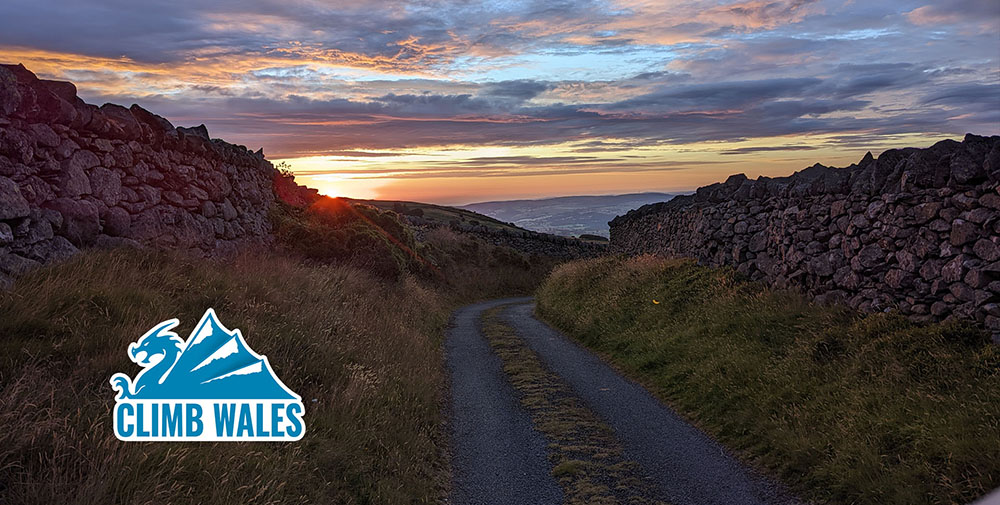
Welsh 3000s Full Route Map
The map below shows the full route for the Welsh 3,000s including the initial walk up Snowdon, stopping at vehicles in the Llanberis Pass and Ogwen Valley, and getting back down to the car park at the end of the hike. On a desktop/laptop, you can use the Ctrl key to pan around the 3D world, on a mobile/table use two fingers.
Click here to download the full Welsh 3000s gpx file.
Welsh 3000s Directions / Route Description
In this video I very quickly give a full description of the Welsh 3000s, discussing the route, some of the hazards to look out for, and lots of other smaller tips.
Keep reading to explore some of the topics I mentioned in more detail...
How long does it take to do the Welsh 3000s?
Doing the Welsh 3000s in 24 Hours
As stated above, people typically aim to complete the challenge in under 24 hours. To achieve this goal requires a lot of deliberate training beforehand, and on the day it means you're constantly fighting against the clock. The ever-present tick-tock, tick-tock, means it's go-go-go.
If you're attempting the Welsh 3,000s in under 24 hours, it's worth noting that the clock starts at the top of Peak 1 and stops at the top of Peak 15. The initial walk up Snowdon, which makes up about 23% of the total ascent, as well as the final walk back down to the cars, are not included in the timings. In the summer months, I will often walk up Snowdon the day before and camp at the summit, or even catch the train up on the same day. This means that you start at the top of your first summit on the following day and with fresh legs. This gives you the best chance of completing the challenge in under 24 hours.
If attempting to do the challenge with a time goal in mind, you should do the challenge going from South to North, visiting each summit in the order listed above (starting on Yr Wyddfa / Snowdon, and finishing on Foel-Fras). This means that you cross Crib Goch whilst both your body and mind are fresh, and towards the second half of the challenge, when you're tired and exhausted, the easier Carneddau Mountain Range will be more forgiving.
Doing the Welsh 3000s over 3 Days
Given the topology of the landscape, the Welsh 3000s lends itself particularly well to doing it over three days. The biggest difference here is that it is better to do it in "reverse", starting at Foel-Fras in the North and finishing on Snowdon in the South.
On day 1, whilst you are still feeling fit, you complete the Carneddau. This is the longest section of the challenge, containing 7 out of the 15 peaks. By the end of the day you will have already hiked the longest section, and completed almost half of the peaks. This gives you a great psychological boost early in the challenge.
On day 2, you do the 5 peaks in the Glyderau. Still a big day out, but far more technical and with much better views.
When you wake up tired on the morning of the final day, it's comforting to know that in the Snowdon Massif, you only have 3 peaks remaining.
Doing them in this order means that as you become more tired with consecutive days on the hill, you have fewer and fewer peaks to complete on any given day. It also means that the scenery on each consecutive day becomes more and more spectacular and dramatic, keeping you alert and engaged as the days progress. It means each day gradually becomes more technical than the last, giving you time to warm up to the idea of doing Crib Goch. And speaking of Crib Goch, it keeps the excitement and anticipation going until the final day. To top it off; the summit of Snowdon - the highest point in all of England and Wales - becomes your finish-line. A grand finalé, fitting for an epic 3-day adventure.
Doing the Welsh 3000s over 2 Days
Personally, I don't like doing the Welsh 3000s over 2 days and would discourage anybody else from doing it. Either aim for the 24-hour challenge, or do it over 3 days instead.
No matter how you distribute your days, one of the two days is always going to be significantly more difficult than the other, making for a very unbalanced weekend.
To split it over two days, you could group the Snowdon Massif and the Glyderau into one day, and then do the Carneddau on the other. If you do the Snowdon Massif and Glyderau on day one, it means that the Carneddau on day 2 would seem lackluster and without interest. If you did it the other way around, it would mean either having to do Crib Goch or Tryfan when you are at your most tired.
If I absolutely had to do it over two days I would do the Snowdon Massif and Carneddau on day one. This means the customer (the only reason I would ever do it over 2 days) can get Crib Goch out of the way early on, although the walk through the Carneddau will be tiring afterward. And then on day 2, do the Glyderau in reverse. This means you get Tryfan out of the way early in the day, and finish on the less technical Y Garn and Elidir Fawr.
No matter which way you work it though, the Welsh 3000s doesn't lend itself well to doing it over 2 days, and it is better to do it over either 24-hours, or 3 days.

Camping on Snowdon Summit - A group of tents and an emergency shelter

Two ladies wrapped in sleeping bags at the entrance to Hafod Eryri
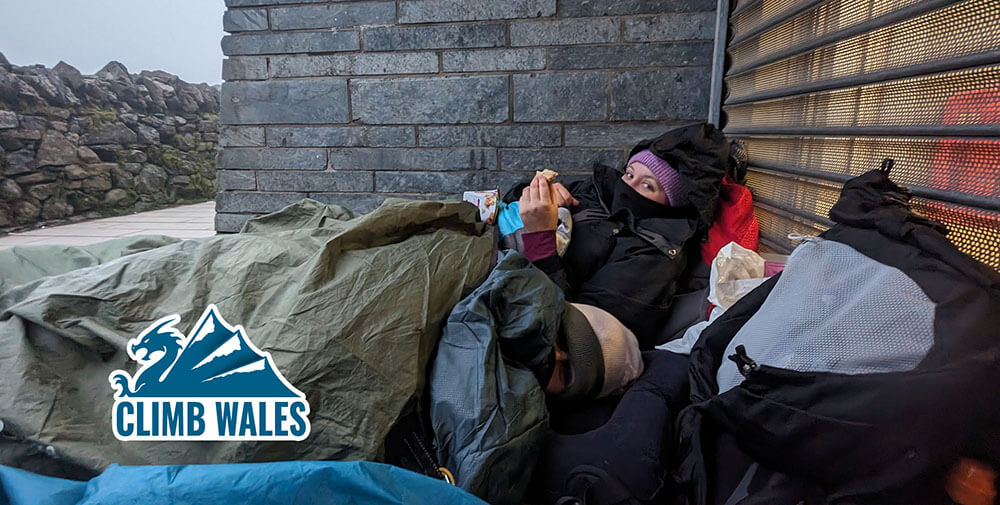
The silhouette of three people packing away tents, in the background, mountain summits can be seen poking through a blanket of clouds

Tents packed away on Snowdon Summit - Ready to start the Welsh 3000s

Which Direction to do the Welsh 3000s
To summarise the above...
If you're doing it in 24-hours, go from South to North. If you're doing it over three days, do it in "reverse", from North to South. If you're doing it over two days, do the Snowdon and Carneddau ranges South to North, and do the Glyderau in "reverse", or better yet, do it over 24-hours or three days instead.
Welsh 3,000s timings and staying on schedule for a 24-hour ascent
Based on the route above, the following table will allow you to plan what time you expect to arrive at each summit. The timings are based on quite a slow pace, and take things like fast and easy sections, or overcoming difficult obstacles into account. The timings have been fine-tuned through years of guiding on the Welsh 3000s and I find them to be very accurate. They are based on a 22-hour completion time (quite slow as Welsh 3000s attempts go), and afford you 2 hours for mistakes/problems. Most people should be able to make up some time here, but it's useful to compare to and make sure you are not falling behind.
The times include a half-hour stop at Snowdon summit, half an hour in Nant Peris, and 45 minutes in the Ogwen Valley.
| Welsh 3000s Timings | ||
|---|---|---|
| Snowdon | Leave Pen Y Pass | |
| Stop near Snowdon Summit | ||
| 1. Snowdon - Start the clock | ||
| 2. Carnedd Ugain | ||
| 3. Crib Goch | ||
| Stop 1 - Nant Peris | ||
| Glyderau | Start next leg | |
| 4. Elidir Fawr | ||
| 5. Y Garn | ||
| 6. Glyder Fawr | ||
| 7. Glyder Fach | ||
| 8. Tryfan | ||
| Stop 2 - Ogwen | ||
| Carneddau | Leave Ogwen | |
| 9. Pen yr Ole Wen | ||
| 10. Carnedd Daffydd | ||
| 11. Yr Elen | ||
| 12. Carnedd Llywelyn | ||
| 13. Foel Grach | ||
| 14. Carnedd Gwenllian | ||
| 15. Foel-Fras - Stop the clock | ||
| Arrive back at vehicles | ||
What time of year to do the Welsh 3000s?
If you have a time-goal in mind then the best time of year to do the Welsh 3000s is June or July, as close to the summer solstice as possible. The longer days mean that you get to do far more of the challenge in daylight. If you leave Snowdon summit at 3:00am, the sun will have risen by the time you get to Crib Goch, you can do all the Glyders in daylight, and the sun won't set again until you're part-way through the Carneddau and on the final stretch. If you're really quick, you can do the whole thing in daylight.
Doing the Welsh 3000s in May and August is not uncommon, and I've even successfully completed the 24-hour challenge in both March and October. The shorter days at this time of year make it impossible to do both Crib Goch and Tryfan in daylight (unless you're running the whole thing). In the darker months, I typically leave Snowdon summit late in the afternoon so that the sun is still up as we cross Crib Goch, then do the whole of the Glyderau in the dark, with the sun just about rising again as you come down into the Ogwen Valley, and then you have daylight for the whole of the Carneddau. Having been walking all through the night, and as you're getting tired towards the end of the challenge, the sight of some sun will help to lift your spirits during the last part of the walk. It also means that when you get home (or back to your accommodation), you can have a shower and a nap just in time for dinner!
It is possible to do the Welsh 3000s in winter, but I'd recommend doing it over three days. Last year (2023), I did it in January whilst the mountains were covered in snow; we took climbing equipment with us, and rather than sticking to the traditional route, opted to take our time, enjoy it, and pick out a route based on interest and excitement, rather than efficiency.
No matter what time of year you do it, expect to be carrying a reasonably heavy bag. In the cooler months you will need to cary LOTS of clothing. And in the warmer months you will need to carry more fluids.

Ponies trekking across the Carneddau with a snow covered Elidir Fawr in the background
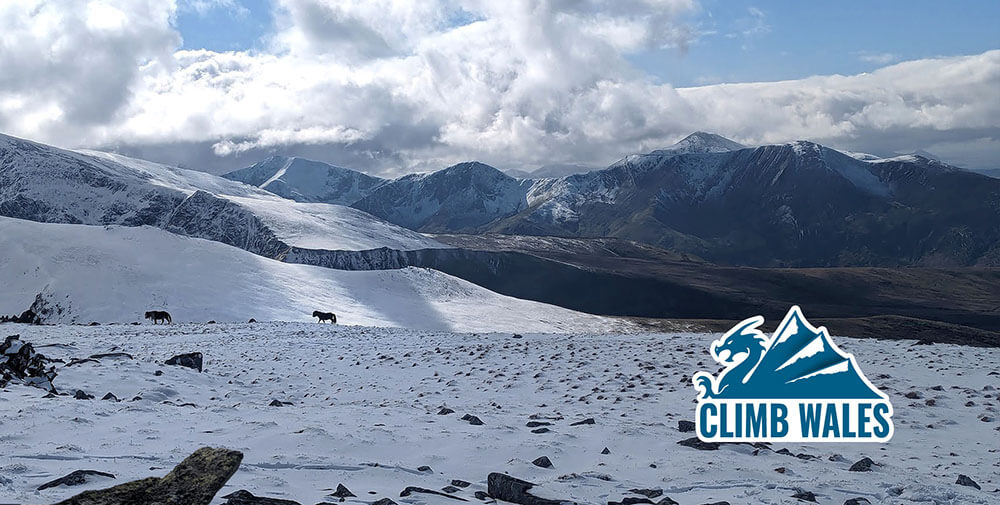
Welsh 3000s Kit List - What Equipment to Take on the Welsh 3000s
Owing to our ever-changing weather, UK mountain walking is unpredictable.
Snowdonia in particular is surrounded by miles and miles of coastline, which brings warm, damp air in off the sea. This damp air collides with the mountains and has nowhere else to go but up into the atmosphere. As this moist air increases in altitude, it cools and condenses, forming clouds and then rain. Exactly what we learnt in school, but far more rapidly. A nice sunny day can quickly turn into a thunderstorm with very little warning. The weather in the mountains of Snowdonia is changeable, and it can change without warning!
During the colder months, temperatures can drop to minus 10°C and beyond. If the wind is blowing, this can easily feel like minus 30! Hypothermia is a risk not to be scoffed at.
Surprisingly, the coldest I've ever been whilst doing a Welsh 3000s was on a first of July, only one week after the summer solstice...
As we were coming over the Carneddau, and starting the last quarter of the challenge. We were getting absolutely battered by the wind and rain as we walked through the night. I remember wearing (as well as a typical base-layer, mid-layer, and fleece jumper) putting on a padded down jumper, a down gilet, 2(!) down padded belay jackets, and a gortex jacket (as well as balaclava, hat and gloves) and I was still freezing. I think this may partly be due to my body having adapted to the summer months, it just wasn't prepared for such a cold night, and also, the group I was with were moving incredibly slowly.
Lots of people seem to make the mistake of thinking that whilst doing all their training, the act of moving keeps them warm, so there's no reason to carry lots of kit during the challenge. This isn't true at all. You've got to be prepared for the fact that when moving as a group, you can only ever go as fast as the slowest person. And the more people there are in the group, the higher the chance of something going wrong.
This is an important takeaway - you've got to be prepared for things to go wrong. If somebody slips and breaks an ankle in the middle of the night, you need to be ready to hunker down and spend the night there. Regardless of what time of year it is, lots of clothes, headtorches, and an emergency shelter are a must.
In summary then, you've got to respect our unpredictable climate by coming prepared to move slowly and for things to go wrong in all weather conditions - be that bright sunshine, wind, rain, and/or thunder.
Essential Personal Kit:
What equipment you take on the Welsh 3000s will largely depend on what time of you're doing it, but the following kit-list should get you started.
- Mountaineering Boots
- Hiking Socks
- Wicking underwear
- Base Layers
- Walking Trousers
- Mid Layer
- Fleece Jumper
- Down/Duvet/Belay Jacket or similar
- Waterproof Gortex Jacket
- Waterproof trousers
- Hat
- Gloves (Several pairs)
- 25-35 Litre Rucksack (45 if you're camping)
- Waterproof Rucksack Liner
- Hydration System. 2 Litre during colder months, 3 Litres if it's warm.
- Head Torch, Spare Head-Torch, and Spare Batteries
- Medication (if required)
- Pain Killers
- Food / Snacks
Optional Kit:
- Balaclava (my own personal preference)
- Hot Drinks Flask
- Even more gloves
- Extra sets of dry clothes to leave in the valleys
- Sweatband
- Sunglasses
- Walking poles
- Knee/ankle supports
- Power pack to charge mobile phones
- Ibuprofen gel
- Gilet / Body Warmer.
- Tissues, Toothbrush, plus any other required toiletries
- Vaseline, or other anti-chafing cream
- Sports Drink
- Some kind of book or entertainment in case for some reason you have to drop-out
Group Kit:
- Map
- Compass
- First Aid Kit
- Group Shelter
- 20m Climbing Rope
- Water Purifier / Chlorine Tablets
It's important that the group is carrying at least one of each item in the Group Kit list. I'd also recommend having a backup map and compass too. Even more important though is that you know how to use everything in this list. If you're hiring a guide for the Welsh 3000s then you shouldn't need to concern yourself with group kit and instead just focus on your personal equipment.
If you’re buying kit from new, some advice is given here:Warm Weather Kit Advice
Cold Weather Kit Advice

7 Ladies sat atop the Cantilever Stone on Glyder Fach in the pouring rain.
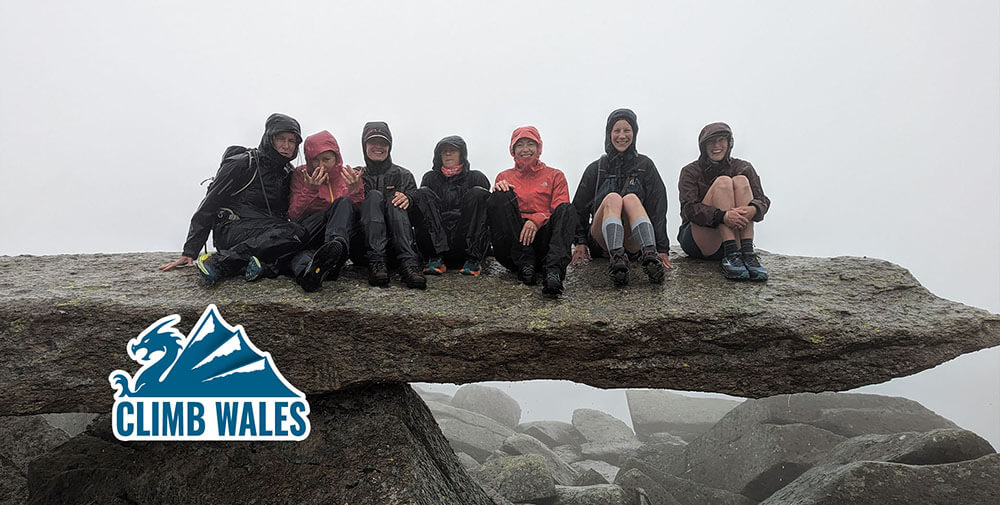
A group of girls in the pouring rain, wearing bright orange emergency ponchos to keep them dry

What Food to Take on the Welsh 3000s
Disclaimer: Please keep in mind here that nutrition and diet are not within the remit of the qualifications I hold. The advice I share here is based on my own limited research and personal experiences only.
With that out of the way...
What food you take comes largely down to personal preference and dietary requirements, however, there are some general tips you should follow.
The aim of the game here is to eat the right food at the right time so that your energy levels remain consistent throughout the challenge, you avoid blood-sugar spikes, and more importantly, crashes. You want to be on a nice even keel throughout the day.
Personally, I see fast burning (sugary) foods as a quick dopamine hit. They can be absorbed quickly by the body and can give you a short "boost" when you're feeling fatigued. They're useful for getting you up that really steep bit of hill, or giving you a psychological lift when your mood takes a dip. Fruits, dairy products, honey, maple syrup, candies and cakes are all examples of fast burning foods. Jelly Babies or Wine Gums are a personal favourite of mine. You can stick them in a pocket and dip into them whenever you feel the need. Sugary foods can spike your blood sugars though, leading to the dreaded sugar-crash. For that reason, the bulk of what you eat should be slow burning.
Slow burning foods take longer to be absorbed by the body so will slowly release their energy over a longer period of time. To avoid spikes in your energy levels, you should mostly be consuming slow burning foods. Starches and fibres, such as wheat products (bread, pasta etc), beans, nuts and root vegetables (potatoes etc) are good example of slow burning foods. Pasta salads, sandwiches etc are typical in the mountains.
I will also carry a selection of foods which contain a mix of both fast and slow burning ingredients. These give you best of both worlds but usually have little in the way of nutrition. Think Flapjacks, Tiffin, cereal/protein bars and the like.
The act of digesting food requires oxygen, so eating a large meal before tackling a big hill can starve your muscles of the oxygen they need (This is why you can feel lethargic after a big meal). A common mistake is eating your lunch at the bottom of a big hill. This will often have the opposite effect of what you intended and make getting up the hill more difficult. Instead, you should eat anything substantial, such as a sandwich etc, at a summit. This allows your body time to start processing the food whilst you're walking down hill and gives it time to settle before you hit that next uphill section.
Also worth mentioning that several (or many) snacks throughout the day are far better than one big meal as this will help to balance your blood sugars.
Carbohydrates are one of the main sources of energy your body will use during the challenge. They are stored in your muscles as glycogen and can be difficult to replace during the activity. For this reason, it is worth considering carb loading for a few days before the event. On the morning of the challenge, you should also aim to have a hearty (slow burning) breakfast and give your body plenty of time to start digesting this before you start the walk.
Salts are important too. If you're anything like me, you will lose a lot of salt through sweat, so you need to consume more salt than you would do normally. Some people add salt to their water, personally I find that a couple of bags of salted crisps, or some salted nuts are sufficient.
I often get asked about Energy Gels. During a race I think that energy gels are useful, but for something like the Welsh 3000s I think it's far better to eat something more substantial and with more nutrition. Just thinking about fuelling my body for 24-hours on energy gels makes my stomach turn.
In a moment I'll provide an example list of what food to carry, but before I do that, let's talk about hydration...
Hydration
In the summer, 2 litres would be considered a minimum for a big hill-day. Effectively though, we're cramming three big hill days into one. Expect to go through about 9 litres of water. If you’re somebody who sweats a lot, then you will need more.
Water is however, probably the heaviest thing you will carry in your rucksack, so it makes sense to try and limit how much you take. At the same time though, you must stay hydrated. Here are a few tips which I have found have worked well for me over the years.
Carry your water in a hydration bladder, not in a bottle. Similar to keeping your blood sugars balanced, you want the same for your hydration. To this end, sipping at water throughout the day is far better than going for long periods without water and then drinking a large quantity. Having a straw which goes from the bladder and over your shoulder means you are far more likely to sip away at your drink than if it were in a bottle tucked away in a rucksack.
I wouldn't normally recommend a sports drink, but for the Welsh 3000s I think it's helpful and one quarter of my "bottle" will be filled with Lucozade. This provides carbohydrates which are easily absorbed by the body, and electrolytes that can help to prevent muscle cramps. It also makes your drink a little more palatable. I do think it's important that the majority of your fluid is plain water though; sports drinks have too much sugar.
No matter what time of year it is I usually only carry 2 litres of drink on each section. I might adjust this for a particularly hot day, but my 2 litre bottle will usually be enough. One time, I was camping on Snowdon the night before the Welsh 3000s and when I woke up, my water bottle had leaked through the night. I ended up walking off Snowdon without anything to drink until we got down into the Llanberis Pass. Relatively speaking, this is only a short section of the hike, but for the whole rest of the day I was playing catch up with my hydration. Only halfway into the next section (The Glyderau) I had already drank all that I was carrying and ended up filling my bottle from a lake. Ever since, I have carried chlorine tablets with me. This gives me a bit more confidence heading into the hills with a 2 ltr bottle, knowing that if I need to fill up at a stream, I can do, and the chlorine tablets will kill "most" of the viruses and/or bacteria.
Last year, I also fell in love with baby cucumbers which are 95% water. My three clients doing the Welsh 3000s with me had brought their personal trainer along with them. He had the group mostly eating bagels and cucumber. I've since tried this myself and baby cucumbers have become a staple part of my Welsh 3000s diet.
I'll get on to food caches and stops further below, but worth mentioning here that whilst down in the valleys, I'll stop for a cup of tea/coffee (or two), as well as a glass of orange juice.
Welsh 3000s Meal List
The following is a list which will get you started, but you'll need to adjust based on your own preferences and what time of day/year you are doing the challenge.
According to my smartwatch, I usually burn about 7 to 8 thousand calories on a Welsh 3,000s. This list doesn't match my calorie expenditure, but through trial and error, is something I have found works well for me.
Invariably, I will always end up with a load of cereal bars left over, but they weigh so little you may as well carry them just in case.
Snowdon Massif- Breakfast, lunch, or dinner, depending on what time you leave the summit:
- Porridge
- or, Tuna and Avocado Sandwich
- or, Pesto Chicken Pasta Salad
- Snacks:
- Sweet pointed pepper
- Baby cucumber x 3
- Apple
- Cereal bar
- Protein bar
- Pain au chocolat
- Bagel
- Breakfast, lunch, or dinner, depending on what time of day it is. Stop and eat in the valley:
- Porridge
- or, Sausage Sandwich (Cooked the day before)
- or, Quiche
- or, Pesto Chicken Pasta Salad
- Banana
- Food to carry through the Glyders:
- Salmon/ham and cheese salad sandwich x 2
- Sweet pointed pepper x 2
- Baby cucumber x 4
- Apple
- Bagel
- Soreen Malt Loaf x 2
- Protein bar / flapjack x 2
- Pain au chocolat x 2
- Peperami x 3
- Bag of sweets
- Breakfast, lunch, or dinner, depending on what time of day it is. Stop and eat in the valley:
- Bacon Sandwich
- or, Pesto Chicken Pasta Salad
- Banana
- Pork pie
- Bag of salted crisps/nuts
- Food to carry through the Carneddau:
- Salmon/Ham and Cheese salad Sandwich
- Sweet pointed pepper x 2
- Baby cucumber x 4
- Orange
- Pickled Onions
- Bagel
- Soreen Malt Loaf x 2
- Kellog’s Nutri-Grain x 2
- Peperami x 3
- Bag of sweets

Bananas, flapjack and other snacks laid out on a paper bag

How to train for the Welsh 3000s
Another Disclaimer: The information I present here is in no way intended as a replacement for professional advice. I strongly recommend that you consult with your doctor before beginning any exercise program. With that out of the way...
You can’t just get off the sofa one day and hope to complete the Welsh 3000s challenge on the next. Successfully getting to the end of the challenge is going to require that you commit time to training, both mentally and physically. Not coming prepared is not only demoralising for the rest of the group as they have to keep stopping and waiting for you, but it also puts other people in danger.
I was doing the Welsh 3000s once with four clients. One of them was clearly, and massively, under-prepared, and was complaining that his feet hurt at the summit of Snowdon. At the very first summit! We were incredibly slow coming down off Crib Goch, but luckily he had a change of shoes in the Llanberis Pass. As we walked up into the Glyders, and into the night, at the very first uphill the team started to spread out. This guy was so slow that you'd have to stop and wait for him every sixty seconds. It was uncanny; you'd wait for him to catch up, walk for one minute, and somehow he was ten minutes behind again. I'm a very empathetic and patient person and care about every individual on the team - getting everybody to the end and celebrating as a team is important to me - but no effort to pick up his spirits made any difference, he just had a negative rebuttal for everything and was if he'd given up before we even started.
On the very first uphill after leaving the Llanberis Pass, two of the team members got so fed up with waiting that they walked off into the night without a map, compass, or any local knowledge. I think this was the most worried I have been in my entire professional career.
There was no way this guy was going to complete the challenge so I made the decision to bail and get down to the valley. On the way down he was losing his footing, so I put a rope around his waist and walked with him. Several times I caught him on rocky terrain where had the rope not of been there, he would have been head-first into a pile of boulders. He was at serious risk of injuring himself.
Thankfully, when we eventually got down into the valley, we met up with the rest of the team and nobody was hurt. After arranging for somebody to collect him, we left the guy in the Ogwen Valley and continued the challenge.
Speaking to him afterward, he told me that he had never been up a mountain before and to get fit for the challenge, his training had consisted of walking around his block, and carrying a kettle-bell from one end of his garden to the other.
Given his background, this guy had done well to get over Crib Goch and keep going through the night, but he had completely underestimated the challenge and shouldn't have been there. He was a danger both to himself and to the rest of the party.
Don't be that guy!
Understand what you're getting yourself into and train accordingly.
Here are some simple training tips which will help you get the most out of your preparation time and make sure not just that you get to the end of the challenge, but also that you enjoy the process.
Ascent / Descent Training
I've put this one first because I think it's the most important.
Walking uphill can be tiring, but with determination, motivation to reach the finish line, and a Jelly Baby or two, it's not too difficult to push through that tiredness and battle on.
Walking downhill on the other hand, you'll be twisting your body as you step from one rock to another in a way which our bodies aren't typically used to, and whilst carrying a heavy rucksack. Getting on the Stair-Master at the gym, whilst valuable for overall strength and endurance training, won't prepare you for the downhills. And if your body isn’t used to it, expect pain in the joints. Particularly in the ankles, knees, hamstrings, glutes, hips, lower back, shoulders...
Unlike a bit of tiredness which can be remedied with a little "pick-me-up", wincing with every step on the downhills is far more difficult to endure and can absolutely ruin your day. In my experience, it's the downhill sections which are the deciding factor on who completes the challenge and who does not.
Despite working full-time in the mountains, when doing the Welsh 3000s the pain has still caught me out in the past, so I've learnt to take a couple of paracetamol at the top of Crib Goch, the top of Tryfan, and the top of Foel-Fras. This means that they're in my system for the three biggest downhills of the challenge, regardless of how I'm feeling at the time.
Getting back on topic though; at some point, you’re going to need to do some hill training. Find some big hills and walk up and down them. If you know what you’re doing, get out in the mountains as often as possible, gradually increasing the size of the day. As a benchmark, two weeks before the event I will aim to do a circular walk around Ogwen (up and down Pen yr Ole Wen, then a loop of the Glyders). It only has a distance of 18km, and a total ascent of 1,690m, but if I can do this without difficulty then I know I'm good shape for the Welsh 3,000s. For the whole of the next two weeks I'll try to do as little as possible in the mountains and instead just focus recovery. This means that come the day of the challenge, I am fully rested and ready for peak performance (for further reading, look into hypertrophy and training mesocycles).
The bottom line is that you've got to get out and spend time walking both uphill AND downhill... whatever you do, don't underestimate the downhills!
Scrambling Practice
Given that Crib Goch - possibly the single most video'd ridge on YouTube - is one of our summits, although not essential, it can be helpful to have some prior scrambling experience. I've taken countless people over Crib Goch who have never done any kind of scrambling before, both during the Welsh 3000s and not. For people who are particularly terrified, it just means that you lose a lot of time here. Being two hours behind schedule after peak 3 means that you're playing catch up for the rest of the day. Although this in itself can sometimes be good motivation to push harder.
I can imagine that a fear of Crib Goch could also have a detrimental impact on your preparation for the event. If you're doing the challenge by yourself, or with a group of friends, you should absolutely go and do Crib Goch beforehand. If you're doing it with a guide, it would certainly be helpful to have done Crib Goch beforehand, but isn't 100% essential.
With hill training and scrambling out of the way, let's talk about some more generic training tips...
Cardiovascular Training
Cardiovascular Training is all about building your lung capacity, and improving and strengthening your overall fitness and heart condition. You don’t need to be a marathon runner (although it might help!) but aim to get moving more with regular walks, running or cycling. Regular runs and brisk walks of 30 – 60 minutes are a great start with a longer walk on weekends. If you’re starting from scratch, consider speaking to a trainer or coach who can help you get started and avoid the risk of injury.
Time on Feet
You’ll be on your feet for a long time over the course of the challenge with little opportunity to stop and rest. When embarking on training for this sort of challenge, it’s helpful to focus on time spent on your feet rather than distance. Think about how much time you can commit to training, and how long you think you’ll be walking in the mountains for. You won’t need to walk that far in training but building up over time will provide you with the biggest chance of achieving your number one goal - having a safe and enjoyable day out. A good rule of thumb is to increase no more than 10% each week the total time training, in particular your long session - this helps to avoid burnout, overtraining and most importantly reduces risk of injury.
Strength Training
You don’t need to be dragging tractor tyres around but having strong legs, body and mind will give you some extra help and confidence on these incredible mountains. Focus on quads, hamstrings, calves, and of course, the glutes. It’s not just your lower body that needs help. You need strong shoulders to carry your rucksack for extended periods, so give your traps and shoulders some focus during your training months too.
Stretching, Core and Flexibility
Taking care of tired and achy muscles is often the last thing we want to do after a training session but stretching well after a workout (avoid stretching before when your muscles are cold) can really help us start the next training session on the right note. Do some core work to support your back carrying that pack, invest in a foam roller, go to some yoga classes. You don’t need to be like Jane Fonda, you don’t even need to touch your toes, just give your muscles the TLC they deserve.
Mental Strength and Goal Setting
A big part of succeeding in this sort of challenge is the mental strength involved. When all you want to do is stop, give up, and get down to the nearest pub, what is it that will keep you going?
Start to visualise the end of the challenge, or the top of each peak. How do you think that will feel? What does it mean to you? Why are you doing the Welsh 3000s? How will you be different by the end of it? Having this written down can be a useful motivator.
During training, having smaller goals and milestones to reach can really motivate and help you keep moving forward with training, when the weather is bad, it’s dark, it’s late <insert any of 1000 excuses>. What will motivate you?
It's the Journey not the Destination
Try to focus on the journey from where you are today, to enjoy the process of getting to the foot of the mountains. Sometimes what happens on the mountain is out of your control. As long as you have prepared to the best of your ability that is the best you can hope for, the primary goal is to get home safely, and you have a huge part to play in ensuring that happens.
Welsh 3000s Records
My own fastest time, set in my early twenties, is 9 hours and 15 minutes. However, this was doing the route in reverse (starting on Foel-Fras and finishing on Snowdon). That day, I really struggled on the downhills too. I ran the Carneddau, and was planning to run the road up through the Llanberis Pass, but my knees were in bits and I lost considerable time here. About to turn 47, I am still trying beat that time.
The current fastest known record was set by Finlay Wild in 2019, with a time of 4 hours and 10 minutes!
The fastest ladies time is 5 hours and 28 minutes, set by Angela Carson in 1989.
There's a great video from the 1980's of Colin Donelly setting the then record of 4 hours and 19 minutes. His time remained unbeaten for 30 years.
Other Welsh 3000s Logistics
Caches / Support
I've done the Welsh 3000s using only what I've carried on my back, I've done it self-supported with caches in the valleys, and I've done it with a support crew. Whilst there's no denying that getting down into the valley and already having a hot cup of tea and a bacon butty waiting for you makes your life easier, usually you're going to do it self-supported.
Given that we have three mountain ranges, it makes sense to have some kind of cache or support station between them. For the most part, people use a vehicle for this purpose, but hiding a rucksack between some boulders can also be a good option (there are some great places to do this, but I won't list them here for fear of unsavoury folks seeking them out). If you are going to leave something somewhere, please leave some kind of waterproof note with them to say what you're doing and when you expect to be picking your items up. This will help to reduce the number of calls to mountain rescue and emergency services from helpful passers-by.
In the Ogwen Valley there is also a coffee-shop at the visitor centre, but getting to it means you have to take a less optimal route which involves only a small detour, but leaves you taking the more difficult of the two paths up Pen yr Ole Wen. In my early 20's, when I didn't know the mountains as well as I do now, this is the way I would always do it.
In the past, I have used the Helyg (in the Ogwen Valley) and Ynnys Etws (Llanberis Pass) Climber's Club huts. That way I can leave any equipment I want under full lock and key, and have full cooking, cleaning and showering facilities. This does require being a member of the Climber's Club though so isn't an option which is open to everybody.
Helyg, in the Ogwen Valley, adds about 5km to the trip so is less than ideal, so I only use it for a three-day ascent. Glan Dena, which is owned by the Midland Association of Mountaineers is far better positioned as it requires no detour whatsoever and sets you up for the easier route up Pen yr Ole Wen.
The London Mountaineering Club has a hut in Nant Peris, and the University of Longon Graduate Mountaineering Club have a hut at Caseg Fraith in the Ogwen Valley. Both these, and Helyg accept external bookings from non-club members, and would not only make excellent caches along the way, but would also be a great place to base yourself during your visit.
I have also made use of a motorhome parked in the Ogwen Valley. Again, this can be ideally placed so that there is no detour and en-route for the easier Pen yr Ole Wen path. However, parking in Ogwen is becoming increasingly difficult and the increasing number of people visiting the mountains of Snowdonia is having a detrimental impact to local services and land-owners. On a busy summer's day, seeing up to 30 vehicles a day being towed away is not uncommon. During busier periods then, you should consider other options.
At present, there is one lay-by in the Ogwen Valley where motorhome parking is permitted:
Parking in the Llanberis Pass is much easier; there's a big pay and display car park at Nant Peris:
This car park is in the perfect location for your first stop. You can walk up Snowdon from here, but it's a longer route than is necessary. You're better off catching the Snowdon Sherpa Bus to Llanberis and walking up Snowdon via the Llanberis Path, or catching the bus to Pen y Pass and walking up the Miner's or Pyg Track. Of the three options, the Miner's Track is my preferred route; for the first three and a half kilometers there is virtually no uphill, which gives your body a nice, long, gentle warmup. To be honest though, it doesn't really make much difference which one you take. The clock doesn't start until you leave Snowdon so the important thing here is that you take your time.
For me personally, I don't take any of the main paths up Snowdon. Giving that I'm usually meeting clients for the first time, I use a private car park and go up what is commonly known as the Cwm Glas Ridge. This gives me a chance to see the clients do some easy scrambling before we get anywhere near Crib Goch.
What to leave at your caches
For a successful Welsh 3,000s, you want to have plenty of food and water available at your caches. Having access to motorhomes, club huts, and private residence, I usually have the luxury of being able to leave the vehicles where there are running water and cooking facilities. On the odd occasion that this isn't possible, I leave a 20ltr bottle of water in the car for everybody to fill their hydration packs from, as well as a camping stove and kettle.
I do my best to restrict the first stop (in the Llanberis Pass) to 30 minutes, and the second stop (in the Ogwen Vally) to 45 minutes. If you're not careful, you can very quickly lose track of how much time you are spending, so it's important to have everything organised in advance.
Given that we have 30 minutes, it's a good time to have a "proper" meal. A bacon and/or sausage butty is typical for me. It's got protein, carbs, and helps to replenish some of the salts I will have lost through sweating.
Other things which I'll leave in the valley are a change of shoes and a complete change of clothes. I'll be honest, not once have I ever got changed into them. The technical clothing that we wear in the mountains dry out so quickly I've never felt the need to get changed. Better to be prepared for the unexpected though.
With the footwear, it's nice to know that if blisters are forming you have a different pair of footwear you can change into. To this day, I'm still tempted by the idea of doing the Carneddau in trainers and will leave a pair in the Ogwen Valley. However, my boots work well for me and I don't get blisters, so every time I've reached Ogwen I've felt that if the boots on my feet are working well then why take the risk?
The one item of clothing I will often change though is my socks. Getting into a dry pair of socks can make a world of difference to your morale.
Other things to include at your caches are spare head-torches and batteries, extra clothing, hats and gloves if you're getting cold or think you might get cold, obviously food for the next part of the journey, some gaffa-tape for those improvised repairs, and a power-pack to charge your phone/watch. I've seen numerous walking poles snap during the Welsh 3000s too, so I'll leave one spare pole at each cache.
If you've camped on Snowdon then you can leave all of your camping equipment behind at the first stop and pick up a lighter pack for the rest of the challenge.
Whilst you're stopped at your caches, don't be tempted to sit down and stop. You'll stiffen up and find it hard to get going again. Instead, use the time to stretch out your calves, glutes, back and shoulders and do your best to stay active.
Should you hire a guide for the Welsh 3000s?
One of the first things you need to do is decide if you're going to do the Welsh 3000s yourself or if you're going to hire a guide. Obviously, I have some bias here; your hiring me as a guide is how I earn a living, but the intention of this article is to enable you to make an informed decision. To this end, here are some things you should consider:
How well do you know the route?This is especially important when attempting the Welsh 30000s in under 24-hours. There is little time for navigational error. A good guide, who knows the route well, will be able to keep the pace up and not have to keep stopping to check a map. It gives you the confidence that you're on the most efficient route and will dramatically increase your chances of success. You will be walking through the night, and often in thick fog - are you able to (do you want to) navigate in those conditions.
A Welsh 3000s Guide's intimate knowledge of the route will mean that they always know what's around the corner. This gives them great insight into things like when to move quickly, when to rest, and when to eat, so that you're always ready for the next obstacle and performing at the optimal level.
How experienced are you?Have you ever done anything like this before? Do you have enough mountaineering experience to be able to tackle everything the challenge throws at you? Can you read the weather cues and spot a storm brewing? Can you look at a map and spot where the dangers are? This is a guide's day-job, they do it day-in, day-out, and have a huge wealth of experience to draw upon.
Do you have the right equipment, and do you know how to use it?Can you reliably use a map and compass? GPS devices are great, but they're just one cog in a far bigger machine. The most important thing when attempting the challenge is that everybody gets home safely, period. It only takes one wrong turn for things to quickly go South!
Do you know what to do in an emergency?If there's an accident, can you administer first aid? If somebody falls unconscious, do you have the appropriate equipment to keep both you and the rest of your group safe until a rescue party can reach you?
If something goes wrong, do you know the exit routes which will get you safely back down to civilisation?
Would you like somebody else to take care of all the logistics?As you can see from this article, logistically there's a lot to consider. Hiring a Welsh 3000s Guide means that all of this is taken care of and you don't need to worry about any of it. You can make use of the private parking, cooking, and bathroom facilities which are available to us along the route. We can even provide accommodation before and after the hike, as well as all of your food and drink for the duration of your stay. All you have to do is put on your hiking boots and enjoy the walk.
Help with Advice, Questions and Preparation
There's so much information available on the internet that it can be difficult to make sense of it all. If you book with Climb Wales then we're at your beck and call. We'll arrange Zoom/Teams meetings to make sure you're happy with the plan, and with WhatsApp, email and telephone, we're available to answer all of your questions, no matter how big or how small, both during your initial training, during the run-up to the event, and for after-care advice post-challenge. We're with you on your Welsh 3000s journey every step of the way.
If you think a Welsh 3000s guide is for you, you can book here:
Book a Welsh 3000s GuideFurther Reading
Check out this article if you'd like to know more about how difficult the Welsh 3000s challenge is.

Starting the Welsh 3000s at Snowdon Summit
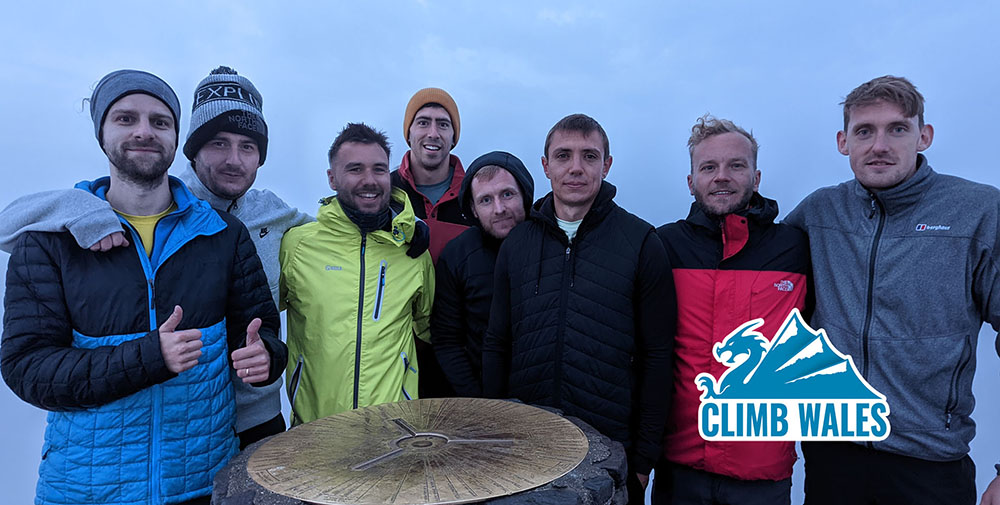
Welsh 3000 Final Summit - the Finish Line!
